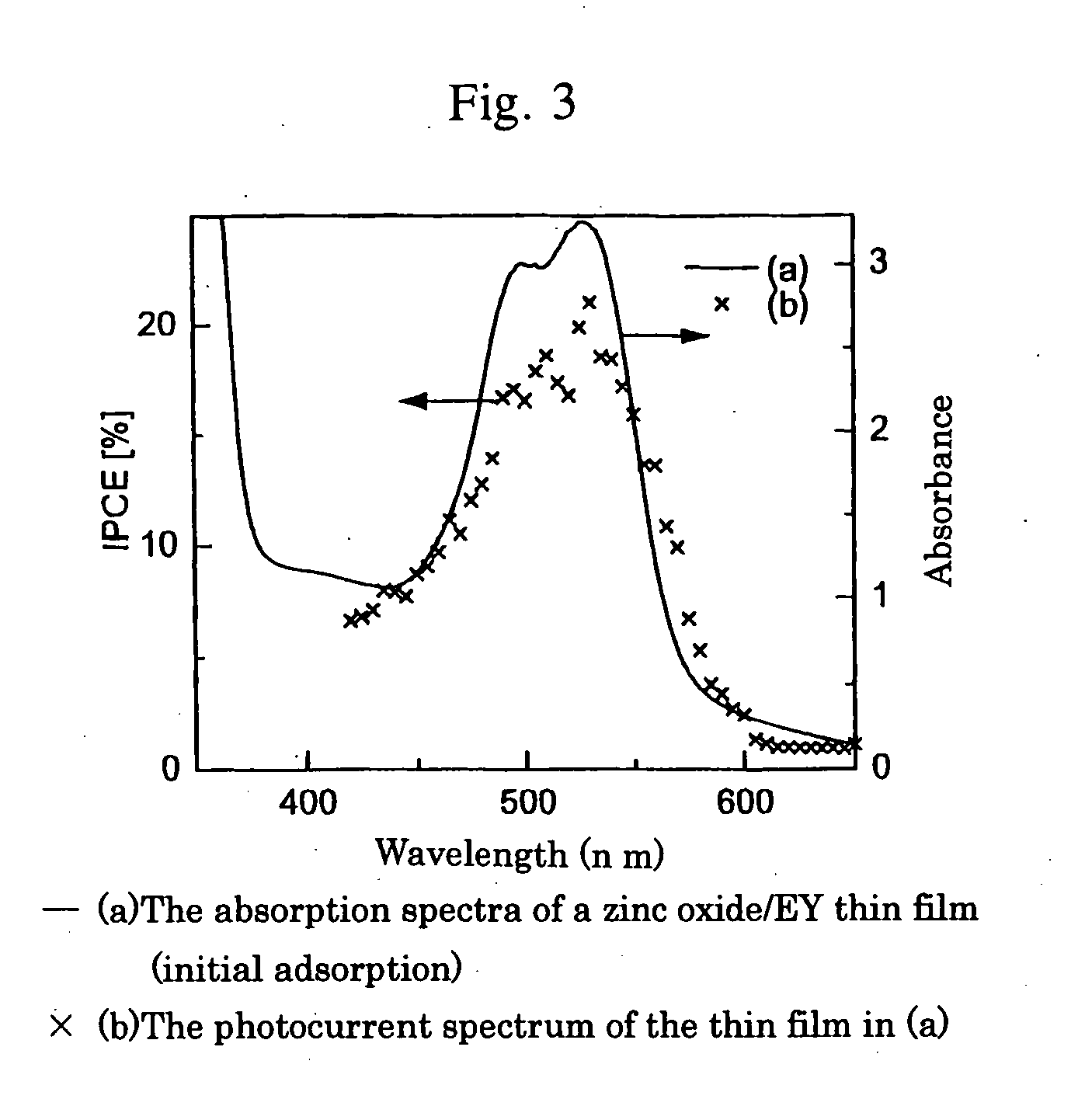Porous zinc oxide thin-film for substrate of dye-sensitized solar cell, zinc oxide/dye composite thin-film for photoelectrode and dye-sensitized solar cell
a solar cell and substrate technology, applied in the direction of light-sensitive devices, electrolytic capacitors, electrochemical generators, etc., can solve the problems of insufficient photoelectric conversion ratio, difficult to use inexpensive plastics as transparent substrates, and restricted selection of transparent substrates, etc., to achieve the effect of improving photoelectrode characteristics and high photocurren
- Summary
- Abstract
- Description
- Claims
- Application Information
AI Technical Summary
Benefits of technology
Problems solved by technology
Method used
Image
Examples
Embodiment Construction
[Preparation of Porous Zinc Oxide Thin Film]
[0048] Eosin Y (abbreviated as EY hereinafter) was used as a template compound having anchor groups. The bath used for forming the zinc oxide thin film (referred to a zinc oxide / EY thin film (after initial adsorption) hereinafter) comprising EY adsorbed on the inner surface of the thin film is an aqueous solution of 30 μM eosin Y (40 ml) prepared so that the concentrations of ZnCl2 and KCl are 5 mM and 0.09 M, respectively.
[0049] The electrolysis device was a single chamber cell having a three electrode system comprising an ITO glass substrate used as a working electrode, a Zn wire used as a counter electrode and a saturated calomel electrode used as a reference electrode (SCE). The ITO glass substrate was immersed in a 45% aqueous nitric acid solution for 2 minutes, and was used after a surface treatment. The thin film was deposited by fixing the substrate in an water bath at 70° C., and by applying constant voltage electrolysis with an...
PUM
| Property | Measurement | Unit |
|---|---|---|
| electrochemical reduction potential | aaaaa | aaaaa |
| temperature | aaaaa | aaaaa |
| specific surface area | aaaaa | aaaaa |
Abstract
Description
Claims
Application Information
 Login to View More
Login to View More - R&D
- Intellectual Property
- Life Sciences
- Materials
- Tech Scout
- Unparalleled Data Quality
- Higher Quality Content
- 60% Fewer Hallucinations
Browse by: Latest US Patents, China's latest patents, Technical Efficacy Thesaurus, Application Domain, Technology Topic, Popular Technical Reports.
© 2025 PatSnap. All rights reserved.Legal|Privacy policy|Modern Slavery Act Transparency Statement|Sitemap|About US| Contact US: help@patsnap.com



